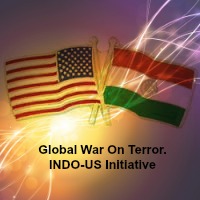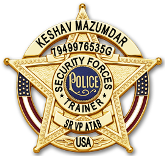Rethinking Military Intelligence
4th Generation Warfare:Doctrinal Adaptations to Asymmetric Enemy

BRITISH ARMY ORG
Formation and structure[edit]
 |
| Arms of the British Army |
|---|
| Combat Arms |
|
|
| Combat Support Arms |
| Combat Services |
|
|
The structure of the British Army is complex, due to the different origins of its various constituent parts. It is broadly split into the Regular Army (full-time Officers/soldiers and units) and the Army Reserve (Spare-time Officers/soldiers and units).
In terms of its military structure, it has two parallel organisations, one administrative and one operational.
Administrative
- Regiments and Corps. These are listed below (in the template to the right), ranging from the Household Cavalry to the Army Physical Training Corpsand the Royal Logistic Corps. Uniquely and somewhat confusingly, the Infantry, which is not a corps but a collection of separate regiments, is administered by 'Divisions' of infantry – Guards Division, Queen's Division,Scottish Division and so on.[141]
Operational
- The major operational command is based at Andover and is known as "Army Headquarters".[142][143] It is split into divisions and subordinate units ranging from regiments to squadrons.
- Divisions (1 Div. based in Herford in Germany and 3 Div. based inBulford)[144]
Structure of units[edit]
The standard operational units are structured as follows, although various units have their own structure, conventions, names and sizes:[145]
| Type of Unit | Division | Brigade | Battalion / Regiment | Company /Squadron | Platoon /Troop | Section | Fire Team |
|---|---|---|---|---|---|---|---|
| Contains | 2–3 Brigades | 3–5 Battalions | 5–7 Companies | 3 Platoons | 3 Sections | 2 Fire Teams | 4 Individuals |
| Personnel | 10,000 | 5,000 | 550–750 | 100 | 30 | 8–10 | 4 |
| Commanded by | Maj-Gen | Brig | Lt Col | Maj | Capt, Lt or2nd Lt | Cpl | LCpl |
Corps are made up of two or more divisions, but now are rarely deployed as a purely national formation due to the size of the British Army.[145]
In place of a Battalion, a task-specific Battlegroup may be formed. A battlegroup is grown around the core of either an armoured regiment or infantry battalion, and has other units added or removed from it as necessary for its purpose. It results in a mixed formation of armour, infantry, artillery, engineers and support units, typically consisting of between 600 and 700 soldiers under the command of a Lieutenant Colonel.[145]
A number of elements of the British Army use alternative terms for battalion, company and platoon. These include the Royal Armoured Corps, Corps of Royal Engineers, Royal Logistic Corps, and the Royal Corps of Signals who use regiment (battalion), squadron (company) and troop (platoon). The Royal Artillery are unique in using the term regiment in place of both corps and battalion, they also replace company with battery and platoon with troop.[145]
Divisions[edit]
The British Army currently has two operational divisions.[146]
| Name | Headquarters | Subunits |
|---|---|---|
| Herford, Germany | In the future, seven infantry brigades and one logistics brigade. | |
| Bulford,Salisbury | Two, in the future, three armoured infantry brigades and one logistics brigade. |
Brigades which are not under 1st (UK) Division at any one time report directly into Regional Command.[147]
Rapid Reaction Force[edit]
16 Air Assault Brigade forms the bulk of the Army's rapid reaction force.
Combat support[edit]
Force Troops Command, or FTC, forms the basis of the Army's Combat support, containing units ranging from artillery to military police.[148]
Aviation components[edit]
The British Army operates alongside the Royal Air Force and the Fleet Air Arm as part of Joint Helicopter Command, but the army also has its own Army Air Corps. Military helicopters of all three services are commanded by Joint Helicopter Command, a joint 2 star headquarters operating under HQ Land Forces.[149]
Special forces[edit]

The British Army contributes two of the three special forces formations within the United Kingdom Special Forces directorate: 22 Special Air Service Regiment and the Special Reconnaissance Regiment.[150]
The Special Air Service overall comprises one regular regiment and two Army Reserveregiments.[151] The regular regiment, 22 SAS, has its headquarters and depot located inHereford and consists of five squadrons: A, B, D, G and Reserve with a training wing.[152] The two reserve regiments, 21 SAS and 23 SAS (collectively, the Special Air Service (Reserve) (SAS(R))) are no longer part of the UK's special forces and now form part of 1st Intelligence, Surveillance and Reconnaissance Brigade.[153]
The Special Reconnaissance Regiment (SRR), formed in 2005 from existing assets, undertakes close reconnaissance and special surveillance tasks.[150] The Special Forces Support Groupwas formed around 1st Battalion the Parachute Regiment, with attached Royal Marines andRAF Regiment assets, the unit is also open to any member of the HM Armed Forces. The Special Forces Support Group are under the Operational Control of Director Special Forces to provide operational manoeuvre support to the elements of United Kingdom Special Forces.[154]
USA
| Military organization | ||
|---|---|---|
| Typical Units | Typical numbers | TypicalCommander |
| fireteam | 3 or 4 | corporal |
| squad/section | 8 or more | sergeant |
| platoon | 15–30 | lieutenant |
| company | 80–150 | captain/ major |
| battalion | 300–800 | lieutenant colonel |
| regiment/brigade | 2,000–4,000 | colonel/ brigadier general |
| division | 10,000–15,000 | major general |
| corps | 20,000–40,000 | lieutenant general |
| field army | over 80,000 | general |
| army group | several field armies |
field marshal |
Armies[edit]
|
||||||||||||||



